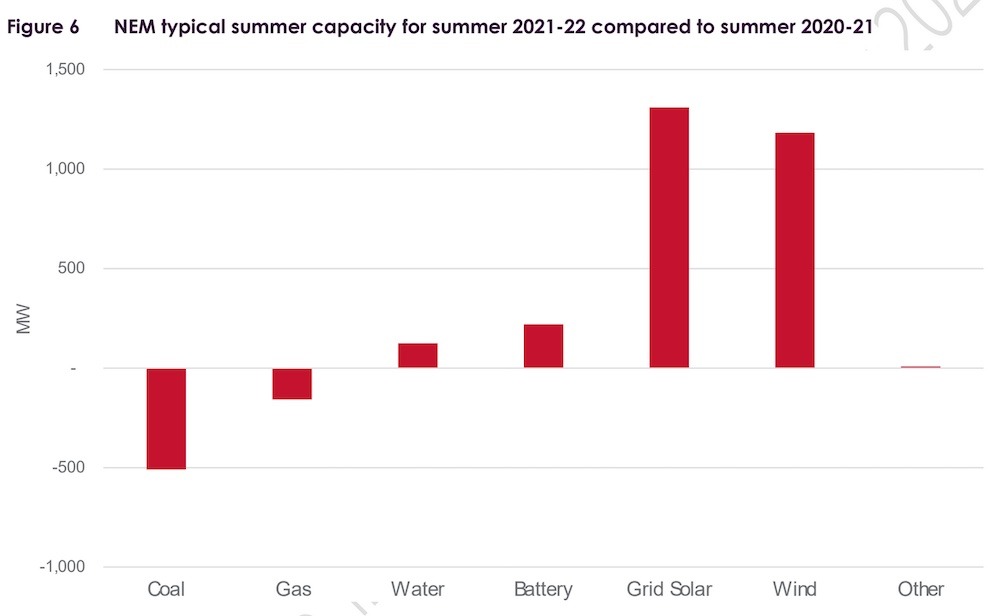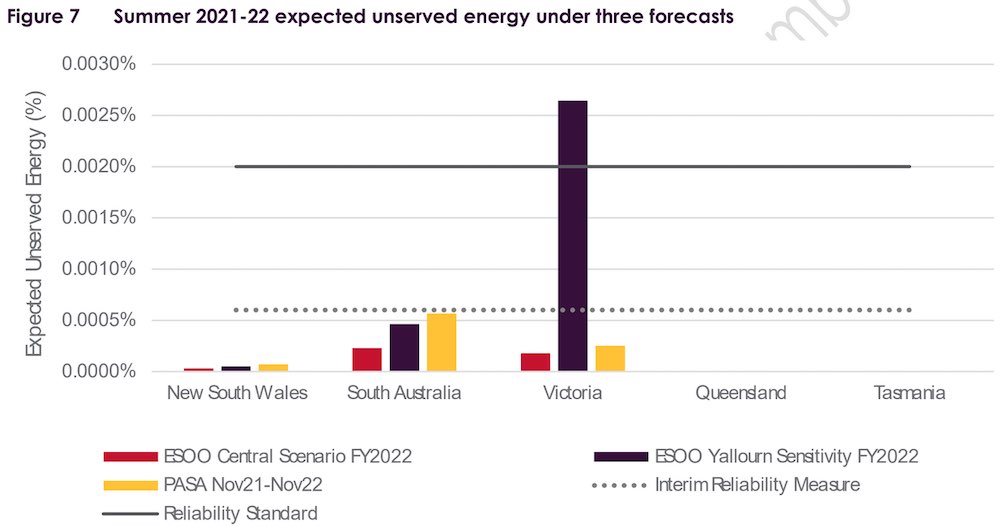The Australian Energy Market Operator has for the second year in a row predicted no supply shortfalls for the upcoming summer, buoyed by Covid-defying amounts of new rooftop solar capacity and forecasts for milder La Niña conditions.
In its 2021-22 Summer Readiness Plan for the National Electricity Market, AEMO said the addition of 2.6GW of small-scale solar generation and 2GW of grid-scale solar and wind has strengthened the reliability outlook, offsetting a number of thermal generation units that will be out of action.
“Continued rapid development of new large-scale and distributed renewable resources has helped improve the reliability outlook for summer 2021-22,” AEMO said, giving special mention to “much stronger” distributed solar uptake than anticipated during the pandemic.
Added to that, the declaration of the first back-to-back La Niña event in a decade meant that, simlar to last summer, the market operator was expecting less of the intense heatwave and bushfire conditions that pose some of the biggest threats to supply over this period.
But reduced risk is not zero risk, of course, and the AEMO identifies some of the key challenges to a smooth-running summer as freak weather events, a lack of availability of “a number of significant scheduled generating units,” and periods of extreme low demand coupled with high solar output.
Generation unavailability includes the Callide C Power Station unit 4 (Queensland), the Hunter Valley Gas Turbine (NSW) and the Mintaro Power Station (South Australia). Also, in South Australia the Snapper Point Power Station will be unavailable for part of the summer, while the Torrens Island A PS unit 3 and B PS unit 1 have been mothballed.
But one of the thermal generation assets the AEMO is most concerned about over the La Niña summer is EnergyAustralia’s Yallourn coal power station in Victoria’s Latrobe Valley, which remains vulnerable to heavy rainfall after the threat of flooding compromised its output once already earlier this year.
And while La Niña promises less extreme heat, it also increases the likelihood of extreme rainfall events leading to flooding, as well as tropical cyclones.
“As outlined in the 2021 Electricity Statement of Opportunities report, under high rainfall conditions the Morwell River Diversion in Victoria could flood, impacting availability at the Yallourn Power Station,” the report says.
“Should such an event occur, AEMO forecasts a risk of between 150,000 and 500,000 customers in Victoria being without power for up to eight hours during an extreme heat event (that is, a one-in-10-year peak demand event) at least once this summer.
“While the probability of such an event is low, AEMO is working with the Victorian government to explore options that could help mitigate this risk.”
Working in AEMO’s favour this summer is the new Victorian Big Battery, near Geelong, which is expected to be fully commissioned later this month.
“The [VBB] increases generation availability in Victoria and also increases transfer through the Victoria – New South Wales interconnector (VNI) through use of the System Integrity Protection Scheme (SIPS),” the report says.
And, like last year, AEMO has 2,000MW of emergency reserves that can be made available through its Reliability and Emergency Reserve Trader (RERT) mechanism that can be called on in the case of a forecast shortfall in resources to meet the NEM reliability standard.
This mechanism was used for the first and only time last summer, on December 17, 2020, when a transformer incident at the AGL Energy’s Liddell power station in New South Wales led to one of its four generator being taken offline and staying that way for the rest of the summer.
Also on the AEMO’s radar are periods of low demand on mild weather days with conditions suitable for high rooftop solar generation.
“AEMO has implemented an additional market notification framework to increase transparency on actions taken to maintain power system security, and seek a market response where possible, during challenging system operating conditions coupled with high distributed PV exports,” the report says.
“These new market notifications will support market development and better communicate power system risks and the operational response, while industry also works on future solutions to better integrate Distributed Energy Resources and drive consumer participation in emerging and new markets.”
Throughout the summer, AEMO also hosts weekly or as required briefings with governments and transmission network operators on forecast weather and power and gas system conditions for the week ahead, to identifying and mitigate risks before they materialise, where possible.
Lies, myths and greenwashing. Good independent journalism is time-consuming and costly. But small independent media sites like RenewEconomy have been excluded from the tens of millions of dollars being handed out to big media companies from the social media giants. To enable us to continue to hold government and business to account, to cut through the lies and the misinformation about the renewable transition, and to help expand our work, you can make a voluntary donation here to help ensure we can continue to offer the service free of charge and to as wide an audience as possible. Thank you for your support.












